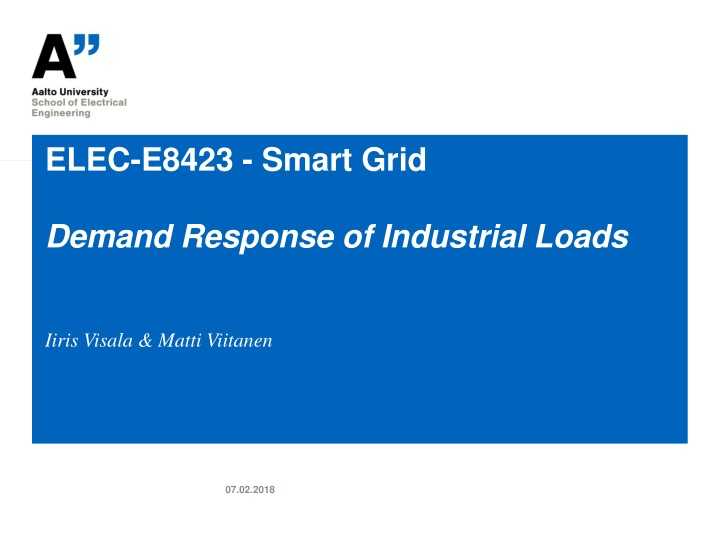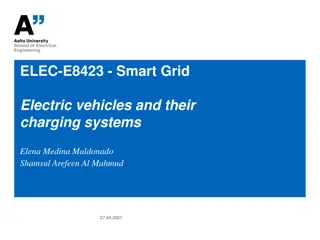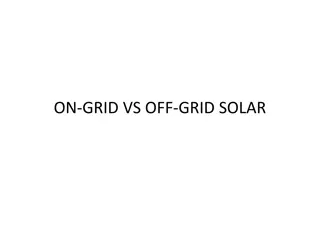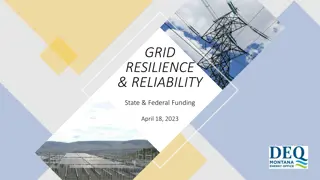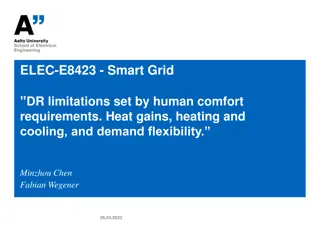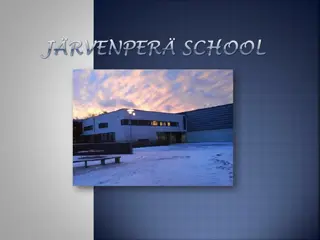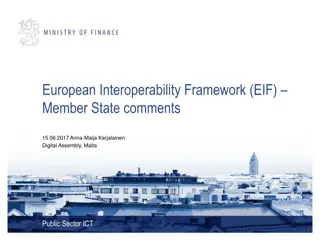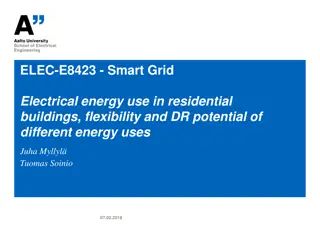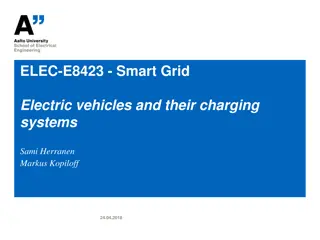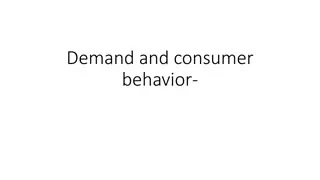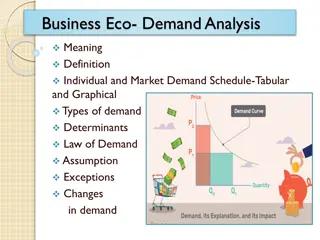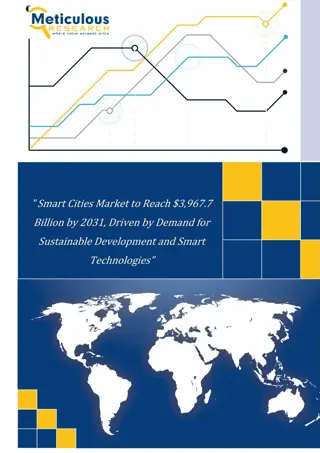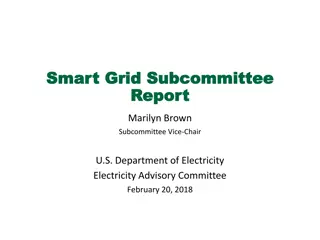Smart Grid Demand Response in Finland
Demand Response (DR) plays a crucial role in balancing power consumption to ensure electricity system stability in Finland, with industrial sectors accounting for a significant share of energy consumption. This article discusses the need for demand response, current state, industrial demand overview, and the untapped potential in industrial side demand response.
Download Presentation

Please find below an Image/Link to download the presentation.
The content on the website is provided AS IS for your information and personal use only. It may not be sold, licensed, or shared on other websites without obtaining consent from the author.If you encounter any issues during the download, it is possible that the publisher has removed the file from their server.
You are allowed to download the files provided on this website for personal or commercial use, subject to the condition that they are used lawfully. All files are the property of their respective owners.
The content on the website is provided AS IS for your information and personal use only. It may not be sold, licensed, or shared on other websites without obtaining consent from the author.
E N D
Presentation Transcript
ELEC-E8423 - Smart Grid Demand Response of Industrial Loads Iiris Visala & Matti Viitanen 07.02.2018
Introduction Demand Response (DR) is the change in power consumption of demand side to better match the supply side to maintain electricity system stability. - TSO and Industrial operators are working together to maintain stable electricity availability for everyone. - Incentives Fingrid (TSO) compensates industrial companies for participating in demand response - Demand response works as a spring between production and consumption - The industrial sector is a major electricity consumer in Finland by 44% of the whole consumption. - Large investments are required to match production and consumption at all times. Still large potential at industrial level. - 07.02.2018 Page 2
What is demand response and why is it needed? Consumers can reduce or shift consumption to cheaper hours Or use alternative electricity sources (backup generators or battery storage to reduce the need for grid's electricity) o Investments needed o Income from adjusting operations - - More consumption flexibility is needed when the share of inflexible and weather-dependent production, such as nuclear, wind and solar power in electricity production increases. o Also, Inertia in the system decreases - Why demand response is used: o Frequency control o To avoid blackouts in the system o Cost management o Integration of renewable energy - 07.02.2018 Page 3
Industrial demand in Finland Accounts 44% of all electricity consumption: - Paper and pulp industry o Steel industry o Chemical industry o 38 TWh of electricity consumption. Many industries require constant electricity consumption Still large opportunities for demand response in industrial operations. o Some operations are critical and implementing DR can be challenging - o In the future Hydrogen production - o 10 % of EU's renewable hydrogen production in 2030 (Ty - ja elinkeinoministeri , 2023) 40 - 50 TWh of electricity consumption in 2030?? 07.02.2018 Page 4
Current state of demand response flexibility in Finland Forest industry mechanical pulpwood mills can use Temporary storage capacity in DR. Steel industry Chemical industry Data centers Own storage systems to prevent outages in case of a fault. - - - - 07.02.2018 Page 5
Potential for demand response in Finland - - There is still massive untapped potential in industrial side demand response Industrial companies are extensive energy consumers that have good existing infrastructure for demand response (sensors, metering etc.). Technical potential in industrial demand response is estimated to be around 1360 MW (S der et al. 2018) - Forest industry - 790 MW (VTT 2007) - Metal industry - 330 MW (VTT 2007) - Chemical industry - 160 MW (VTT 2007) In addition to the current potential there is many investment plans for new industry in Finland that will provide new potential for DR. - - Barriers: Lack of access to information, lack of proper market mechanisms, technical constrains, lack of policies and regulation Ultimately demand response depends on the willingness and mindset of the consumers! 07.02.2018 Page 6
Motivation for more flexible demand Different benefits from DR: Additional revenue Fingrid (TSO) compensates industrial companies for participating in demand response Using DR to manage the risk of high electricity cost during high wholesale price periods In order to participate in demand response industrial companies need to make some investments There needs to be some benefits that motivate the companies. Social obligations Contributing to grid stability Increasing the possibilities of renewable energy sources Balanced grid is essential for high demand industrial processes! 07.02.2018 Page 7
Demand response services Nowadays there are many companies selling participation to demand response markets as a service Allows industrial businesses to gain extra revenues while focusing on their core business. 07.02.2018 Page 8
Conclusions - Industrial sector is responsible for almost half of the electrical demand in Finland. - Demand response is essential to achieve carbon free and functioning electricity network in Finland. - The consumer can benefit from demand response in multiple ways. 07.02.2018 Page 9
Source material used Fingrid (2024): https://www.fingrid.fi/en/electricity-market/market-integration/electricity-market-development-projects/demand- side-management/ Rautiainen, J rventausta. (2020) Demand response A Nordic perspective: Demand_Response_Encyclopedia_of_the_UN_Sustainable_Development_Goals.pdf (tuni.fi) Siddiquee et al. (2021): Progress in Demand Response and It s Industrial Applications - Aalto University Sympower (2024): How to Earn Revenue with Demand Response Sympower Lashmar et al. (2022): Motivations, barriers, and enablers for demand response programs: A commercial and industrial consumer perspective: https://doi-org.libproxy.aalto.fi/10.1016/j.erss.2022.102667 S der, L., Lund, P. D., Koduvere, H., Bolkesj , T. F., Rosseb , G. H., Rosenlund-Soysal, E., Skytte, K., Katz, J. & Blumberga, D. A review of demand side flexibility potential in Northern Europe. Renewable and Sustainable Energy Reviews. 91 (2018) 654-664. Maryam, S., Pierluigi, S., Miadreza, S., Vincenzo, L. & Jo o, P. A survey of industrial applications of Demand Response. Electric Power Systems Research. https://doi.org/10.1016/j.epsr.2016.07.008. K rkk inen. (2007) DSM experiences in Nordic countries. VTT. https://evcedruzgar.enerji.gov.tr/verimlilik/document/SeppoKarkkainen.pdf Ty - ja elinkeinoministeri . (2023). Valtioneuvoston periaatep t s vedyst . [website] [refferd 25.3.2024] Available: https://tem.fi/paatos?decisio- nId=0900908f8080db83 07.02.2018 Page 10
